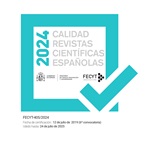La Carta Europea de la Autonomía Local (CEAL) bajo la lupa constitucional. (RI §427331)

The European Charter of Local Self-Government (ECLSG) under the constitutional magnifying glass -
Ana Torrecillas Martínez
El presente trabajo pretende esclarecer las principales aportaciones de la Carta Europea de la Autonomía Local (CEAL) a la conceptualización constitucional del principio de autonomía local (arts. 140-142 CE). A tal fin, se indaga sobre los antecedentes y el origen de la CEAL, para abordar, a renglón seguido una comparación entre las previsiones del tratado y de la Constitución acerca de este principio. Acometida esta tarea, el estudio se dedica a resaltar algunos conflictos en relación con la autolimitación, aplicación y justiciabilidad de la CEAL en España. El análisis termina exponiendo un abanico de soluciones propuestas por la doctrina a las problemáticas identificadas respecto de la materialización de la CEAL en el plano interno, y a realizar algunas proposiciones ex novo, así como una serie de conclusiones sobre el objeto de investigación.
I. MUNICIPALISMO Y DEMOCRACIA: EL ORIGEN DE LA CEAL 1. El antecedente revolucionario: la teoría francesa del povoir municipal 2. Las plantas locales europeas tras la Segunda Guerra Mundial 3. Las entidades locales en la construcción de Europa III. APORTACIONES DE LA CEAL A LA AUTONOMÍA LOCAL DE LA CONSTITUCIÓN ESPAÑOLA DE 1978 IV. CONFLICTOS: AUTOLIMITACIÓN, APLICABILIDAD Y JUSTICIABILIDAD DE LA CEAL 4.1. Autolimitación de la norma internacional en beneficio del ordenamiento interno. 4.2. Aplicabilidad y Justiciabilidad de la CEAL V. FUTURAS POSIBILIDADES 5.1. Panorámica española 5.2. Nuestra propuesta. BIBLIOGRAFÍA.
This paper aims to clarify the main contributions of the European Charter of Local Self-Government (ECLSG) to the constitutional conceptualization of the principle of local self-government in Spain (arts. 140-142 spanish Constitution). To this end, the background and origin of the CEAL are studied, followed by a comparison between the precepts of the Treaty and those of the Constitution regarding this principle. Once this task has been accomplished, the study is devoted to highlighting some conflicts in relation to the self-limitation, application and justiciability of the ECLSG in Spain. The analysis ends by presenting a list of solutions proposed by the doctrine to the problems identified in relation to the materialization of the ECLSG at the internal level, and to make some ex-novo propositions, as well as a range of conclusions on the main subject of research.

 DIRECCIÓN / MANAGEMENT
DIRECCIÓN / MANAGEMENT